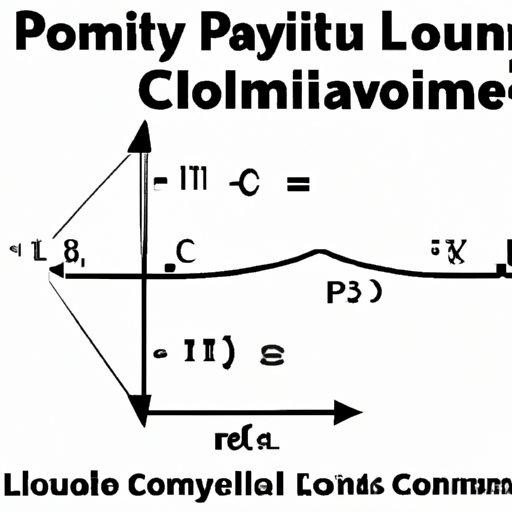Introduction
A leading coefficient is a mathematical concept that applies to polynomials. It is important to understand the concept of leading coefficient in order to accurately solve problems involving polynomials. This article will provide a comprehensive guide to understanding what a leading coefficient is and how it affects polynomials.

An Explanation of Leading Coefficient in Mathematics
In mathematics, a leading coefficient is a number that appears in front of a term with the highest degree in a polynomial. A polynomial can be defined as an expression consisting of variables and constants, combined using only addition, subtraction, multiplication, and exponentiation. The degree of a polynomial is determined by the highest power of the variable in the equation. The leading coefficient is then the coefficient of the term with the highest degree in the polynomial.
For example, consider the polynomial 3x2 + 2x – 5. In this equation, the degree of the polynomial is 2 since the highest power of the variable is 2. The leading coefficient is 3, which is the coefficient of the term with the highest degree (3x2).

A Guide to Understanding the Leading Coefficient in Polynomials
Once the concept of leading coefficient has been established, it is important to understand how it affects polynomials. To do so, it is helpful to look at some examples of leading coefficients in polynomials. Consider the following equations:
• 8x3 + 4x2 + 2x – 1
• 3x4 + 7x2 – 2
In both equations, the leading coefficient is the first coefficient in the equation (8 and 3, respectively). This coefficient is important because it determines the degree of the polynomial. In the first equation, the degree is 3 since the highest power of the variable is 3. In the second equation, the degree is 4 since the highest power of the variable is 4. Therefore, the leading coefficient is essential in determining the degree of a polynomial.
The leading coefficient also has an impact on the shape and direction of the graph of a polynomial. If the leading coefficient is positive, the graph will have a “U” shape and will open upwards. If the leading coefficient is negative, the graph will have an inverted “U” shape and will open downwards.
How Leading Coefficient Affects the Graph of a Polynomial
The leading coefficient of a polynomial has a direct impact on the shape and direction of its graph. To illustrate this point, consider the following equations and their respective graphs:
• y = x2 + 2x – 3

• y = –x2 + 2x – 3

In the first equation, the leading coefficient is 1 and the graph has a “U” shape that opens upwards. In the second equation, the leading coefficient is –1 and the graph has an inverted “U” shape that opens downwards. This demonstrates how the leading coefficient affects the shape and direction of the graph of a polynomial.
Examples of Leading Coefficient in Real-World Problems
Leading coefficient can be used to solve real-world problems. For example, consider the problem of predicting the sale price of a house based on its size. The size of a house can be represented by a polynomial equation, such as y = 0.5x2 + 2x – 1000. In this equation, the leading coefficient is 0.5, which indicates that the house’s sale price increases more gradually with increasing size than if the leading coefficient was larger.
Leading coefficient can also be used to optimize the design of a bridge. By considering the leading coefficients of different designs, engineers can determine which design will best meet the requirements of the bridge while minimizing costs.
Conclusion
In conclusion, this article explored what a leading coefficient is and how it affects polynomials. It discussed the definition of a polynomial and how the degree of a polynomial is determined. It then provided examples of leading coefficients in polynomials and explained how the leading coefficient affects the shape and direction of the graph of a polynomial. Finally, it discussed how leading coefficient can be used to solve real-world problems.
Understanding the concept of leading coefficient is essential for correctly solving problems involving polynomials. With this knowledge, mathematicians and engineers can use leading coefficient to optimize designs and solve real-world problems.
(Note: Is this article not meeting your expectations? Do you have knowledge or insights to share? Unlock new opportunities and expand your reach by joining our authors team. Click Registration to join us and share your expertise with our readers.)
